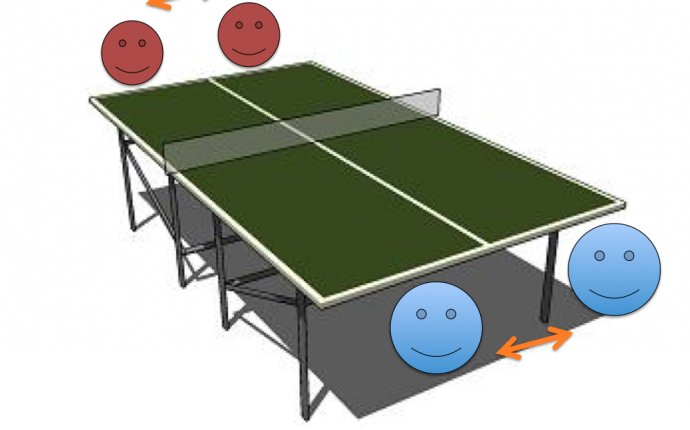
Ping pong doubles serving rules
Cat Dolphin/EyeEm/Getty Images
Do you like to play doubles? Most ping-pong players enjoy a good game of doubles now and again. Playing and winning in doubles competition can be just as rewarding and fun as singles play - after all, there's two of you to share the glory and celebrate!
But most articles written about table tennis tactics and strategies tend to focus on the singles side of competition, while doubles play tends to be treated as an afterthought.
There are some important differences between the tactics used for doubles play when compared to singles, so let's have a look at the basics of playing doubles well.
It Takes Two
I have often seen a doubles team of lesser singles players take on and beat a combination of two stronger singles players. The reason? Just like the old saying, a champion team will beat a team of champions. Two weaker players that know each other's game and play to support each other can be a tougher team to beat than two strong players that don't work well together. There are also some players who are known as excellent doubles players, simply because they know and apply many of the tactics mentioned below. So if you can understand and use these tips, you should be well on your way to becoming a much better doubles player, regardless of who you partner with.
Doubles Serving Tips and Tactics
- In doubles, you have to serve diagonally to your opponent, from your right-hand half of the court to your opponents' right-hand half of the court. This reduces the amount of deception you can get from placing the ball well and allows most opponents to cover the whole half court with either their forehand or backhand side, virtually eliminating the strategy of aiming at their playing elbow. This, in turn, lowers the effectiveness of longer serves, so most of the serves you perform in doubles should be double bounce serves that bounce low over the net and are difficult to attack.









